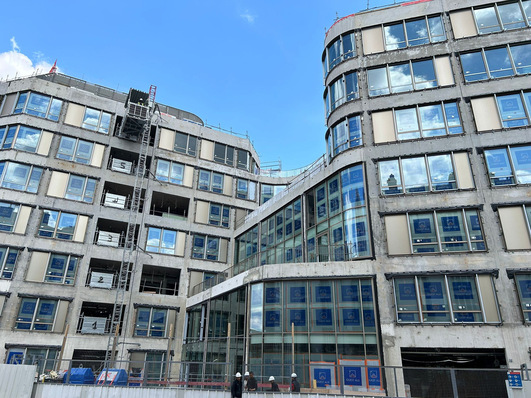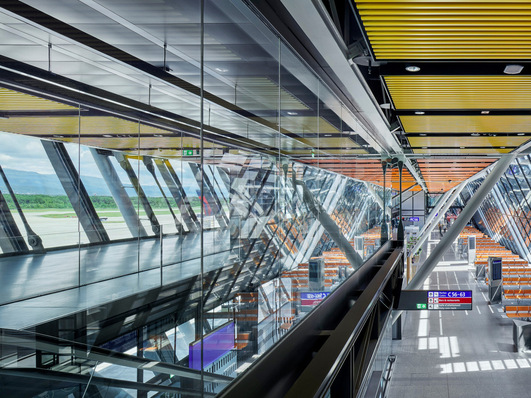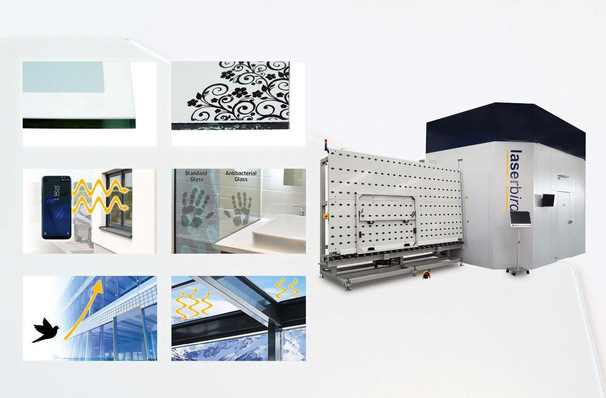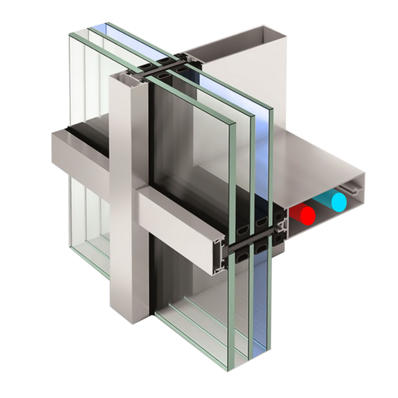The LEED Gold certified Optinieo new build is divided into a 17-storey high-rise and a 5-storey low-rise building. Open loggias and green roof terraces create beautiful meeting places across almost all floors. With its V-shaped elements in front, the three-dimensional facade of the Optinieo gives the entire building a unique dynamic.
See also: A facade installed more quickly with sedak’s gsp elements
Depending on the position of the sun and the time of day, the facade colour changes in a different light. This is due to the large extruded aluminium profiles, each of which extends over two storeys. Their alternating concave-convex arrangement creates an effect of depth and a lively play of shadows on the facade. Behind the V-profiles, ventilation flaps can be opened in the continuous unitised facade, well protected from wind and weather.
Curved glass for transparent curves
On the upper floors, the transparent areas of the unitised facade were designed as floor-to-ceiling fixed glazing, as the ventilation takes place behind the V-profiles. In the area of the loggias, floor-to-ceiling impact panes and all-glass railings provide additional safety.
The ground floor facade is designed to maximise transparency, with large glass formats and a slimline steel mullion and transom construction. Triple insulating glass Climatop with the colour-neutral Cool-Lite SKN 176 or SKN 176 II sun shading coating and Planitherm XN/ XN II low-E thermal insulation coating was used in all transparent facade elements.
Also interesting: B:HUB Berlin: 11,000 m2 of Saint-Gobain glass
Both convex and concave glass elements had to be produced for the organically shaped facade. In total, ClimaPlusSecurit partner vandaglas Döring curved around 155 insulating glass units with a total area of 635 square metres from Climatop Contour, some with steps.
ClimaPlusSecurit partner vandaglas Döring from Berlin, ClimaPlusSecurit partner vandaglas Eckelt from Steyr and Interpane Isolierglas from Parndorf (Austria) shared the delivery of the glass (6175 square metres) with its various dimensions, a collaboration that was described as first-class by all involved. The result: highly efficient glass.














